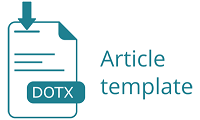Assessment of Job Risks in the Chemical Laboratory of the Pharmacy Study Program with Job Safety Analysis (JSA) Techniques
Abstract
Chemistry laboratory organizes practicum, one of them quantitative pharmaceutical chemistry which uses a variety of chemicals and tools where if not careful, not following instructions or procedures even underestimate will cause work accidents and/ or occupational illness. Is observational descriptive research on the job risk assessments in chemical laboratories prodi pharmacy with JSA techniques aimed at finding out the risk of work performed. Population is type practicum work in chemistry laboratory and the sample is quantitative pharmaceutical chemistry practicum. Data collection techniques i.e. the work that has been selected is further determined with the working procedure and the working steps and then determines the findings of errors from each step of the work then further identify the potential hazards of each step of the work. Data analysis techniques is data from each finding of errors determined potential injury / danger / loss and its impact is then calculated risk value (risk matrix) i.e. the value of consequences multiplied by opportunity value where the results are could grouped into risk extreme, high, medium or low that continued with to determine safeguards measures that can be done to control the such danger. The results showed that performs the titration step has high very risk level value compared to another work step other of pharmaceutical chemical practicum quantitative. Titration activities carry an extreme or significant risk of harm when performed incompatible with working measures and unsafe with potential danger (disadvantage) is liquid evaporates (inhaled), disturbances The End Point of the Titration: change in color and determination of concentration, and perform movements manual repetitive continuously namely mixing the liquid or rotating the container (erlenmeyer) contains a chemical liquid by hand continuously.
Chemistry laboratory organizes practicum, one of them quantitative pharmaceutical chemistry which uses a variety of chemicals and tools where if not careful, not following instructions or procedures even underestimate will cause work accidents and/ or occupational illness. Is observational descriptive research on the job risk assessments in chemical laboratories prodi pharmacy with JSA techniques aimed at finding out the risk of work performed. Population is type practicum work in chemistry laboratory and the sample is quantitative pharmaceutical chemistry practicum. Data collection techniques i.e. the work that has been selected is further determined with the working procedure and the working steps and then determines the findings of errors from each step of the work then further identify the potential hazards of each step of the work. Data analysis techniques is data from each finding of errors determined potential injury / danger / loss and its impact is then calculated risk value (risk matrix) i.e. the value of consequences multiplied by opportunity value where the results are could grouped into risk extreme, high, medium or low that continued with to determine safeguards measures that can be done to control the such danger. The results showed that performs the titration step has high very risk level value compared to another work step other of pharmaceutical chemical practicum quantitative. Titration activities carry an extreme or significant risk of harm when performed incompatible with working measures and unsafe with potential danger (disadvantage) is liquid evaporates (inhaled), disturbances The End Point of the Titration: change in color and determination of concentration, and perform movements manual repetitive continuously namely mixing the liquid or rotating the container (erlenmeyer) contains a chemical liquid by hand continuously.
Keywords
References
Abidin, A. U., & Ramadhan, I. (2019). Penerapan Job Safety Analysis, Pengetahuan Keselamatan dan Kesehatan Kerja terhadap Kejadian Kecelakaan Kerja di Laboratorium Perguruan Tinggi. Jurnal Berkala Kesehatan, 5(2). https://doi.org/10.20527/jbk.v5i2.7827
Albrechtsen, E., Solberg, I., & Svensli, E. (2019). The application and benefits of job safety analysis. Safety Science, 113. https://doi.org/10.1016/j.ssci.2018.12.007
Bawang,Jeferson;Kawatu,Paul A.T;Wowor, R. (2019). Analisis Potensi Bahaya Dengan Menggunakan Metode Job Safety Analysis Di Bagian Pengapalan Site Pakal Pt. Aneka Tambang Tbk. Ubpn Maluku Utara. Kesmas, 7(5).
Fitra, M. (2021). Analisis Resiko Keselamatan dan Kesehatan Kerja (Wijayantono (ed.); 1st ed.). Azkiya Publishing.
Jannah, M. R., Unas, S. El, & Hasyim, M. H. (2014). PADA STUDI KASUS PROYEK PEMBANGUNAN MENARA X DI JAKARTA ( Risk Analysis of Occupational and Safety Using HIRADC Approach and Job Safety Analysis Method in the Case Study of Tower Project X in Jakarta ). Teknik Sipil, 9.
Peraturan Pemerintah RI Nomor 50 tahun 2012 tentang Penerapan Sistem Manajemen Keselamatan dan Kesehatan Kerja, (2012). https://www.google.com/url?sa=t&rct=j&q=&esrc=s&source=web&cd=&ved=2ahUKEwiPl7qU8dTxAhUVYysKHc56AVkQFjAAegQIBRAD&url=https%3A%2F%2Fjdih.kemnaker.go.id%2Fdata_wirata%2F2012-3-1.PDF&usg=AOvVaw042lXNK044tKoy9ys2KSHy
Kawatu, P. A. T., Ratag, B. T., & Pipit Marfiana. (2018). Analisis Risiko Dengan Metode Job Safety Analysis Terhadap. Kesmas Universitas Sam Ratulangi, 1, 18–24.
Martino, P. dkk. (2015). Analisis Identifikasi Bahaya Kecelakaan Kerja Menggunakan Job Safety Analysis (JSA) Dengan Pendekatan Hazard Identification, Risk Assessment And Risk Control (HIRARC) di PT. Charoen Pokphand Indonesia- Semarang. Fakultas Teknik - Universitas Diponegoro, 4.
Moran, L., & Tina, M. (2010). Keselamatan dan Keamanan dengan Bijak Ucapan Terima Kasih untuk Komite Penulisan (1st ed.). The National Academies Press.
OSHA, S. (2021). Panduan Cara Membuat Job Safety Analysis. https://www.safetyshoe.com/cara-membuat-job-safety-analysis/
Pipit Marfiana, Ritonga, H. K., & Mutiara Salsabiela. (2019). Implementasi Job Safety Analysis ( JSA ) Sebagai Upaya Pencegahan Kecelakaan Kerja. Jurnal Migasian, 3(2), 25–32.
Putri, J. I., & Ulkhaq, M. M. (2017). Identifikasi Bahaya Dan Risikopada Area Produksi CV Mebel Internasional, Semarang Dengan Metode Job Safety Analysis. Industrial Engineering Online Journal, 6(1).
Ramli, S. (2010). Pedoman Praktis Manajemen Resiko dalam Perspektif K3. In Dian Rakyat (2nd ed.). Dian Rakyat.
Ridley, J. (2008). Ikhtisar Kesehatan dan Keselamatan Kerja. In Erlangga.
Sulistiyowati, R., Suhardi, B., & Pujiyanto, E. (2019). EVALUASI KESELAMATAN DAN KESEHATAN KERJA PADA PRAKTIKUM PERANCANGAN TEKNIK INDUSTRI II MENGGUNAKAN METODE JOB SAFETY ANALYSIS. J@ti Undip : Jurnal Teknik Industri, 14(1). https://doi.org/10.14710/jati.14.1.11-20
Article Statistic
Abstract view : 1147 timesPDF views : 686 times
Dimensions Metrics
How To Cite This :
Refbacks
- There are currently no refbacks.
Copyright (c) 2021 Jurnal Kesehatan Prima

This work is licensed under a Creative Commons Attribution-ShareAlike 4.0 International License.




